
Liftoff: Elon Musk and the Desperate Early Days That Launched SpaceX
by
Eric Berger
Published 2 Mar 2021
Koenigsmann traced his hand west along the equator from the coast of California. It was all ocean until he got to the Marshall Islands, some five thousand miles away. As they looked at the sprawling chain of tiny islands, Shotwell recognized the Kwajalein Atoll. She remembered something about fighting there during World War II, and felt pretty sure the U.S. military maintained a presence. In fact, the Kwajalein Atoll had briefly been a focal point in the Pacific theater, when eighty-five thousand men in the U.S. Army and Marines landed on Kwajalein, Roi, and Namur islands in early 1944. After hard fighting, the U.S. forces captured their first foothold in the scattered Marshall Islands, opening the way to further assaults on larger targets like Guam.
…
From Gate 14 at the Honolulu airport, Continental Airlines operated a three-times-a-week flight that made several stops in the Marshall Islands, including Kwajalein. The airplane took off at 9:30 A.M., and the rocket scientists flew another 2,500 miles to the largest and southernmost island in the atoll, also named Kwajalein. From the air, the islands were stunning, a string of tiny pearls amid a turquoise sea. Ninety islets comprise Kwajalein Atoll, but their combined landmass is just six square miles, or about one-quarter the size of Manhattan. Each of the coral-covered islands rises only slightly above sea level, forming a broken chain around the world’s largest lagoon. The Army welcomed the visitors with open arms. At the time, the armed forces generally funded about 60 percent of the budget for its major ranges, and expected officers administering the facilities to account for the other 40 percent of needed revenue through commercial contracts.
…
Knowing he could not wait, or sue, or protest, Musk took the only option left to him. After the conference call with the government officials, Musk phoned Buzza directly. We’re going to Kwaj, he told Buzza. Tomorrow, he should begin packing. Two years had passed since Chinnery’s first visit to the Kwajalein Atoll in the middle of the Pacific Ocean, that surreal experience when Army officers had wined and dined her. Now the distant string of tiny islands five thousand miles away extended a critical lifeline to SpaceX. For the first half of 2005, Chinnery had lived mostly at Vandenberg Air Force Base. Now, she, Buzza, and a dozen other engineers and technicians would spend almost the entire second half of the year in Kwaj, commuting daily by boat to Omelek Island.
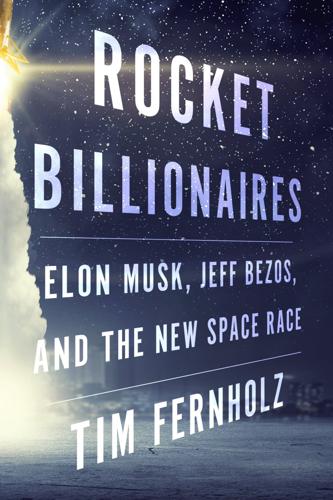
Rocket Billionaires: Elon Musk, Jeff Bezos, and the New Space Race
by
Tim Fernholz
Published 20 Mar 2018
“rocket development so tough”: Elon Musk, “October 2004–January 2005,” SpaceX blog, January 1, 2005, accessed September 10, 2017, http://www.spacex.com/news/2005/october-2004-january-2005. SpaceX team’s Herculean efforts: Kimbal Musk, “Are We Crazy?” Kwajalein Atoll and Rockets blog, February 7, 2006, accessed September 9, 2017, https://kwajrockets.blogspot.co.uk/2006/02/are-we-crazy.html. constructed on Omelek: Kimbal Musk, “Someone’s Looking Out for That Satellite . . .” Kwajalein Atoll and Rockets blog, March 25, 2006, accessed September 14, 2017, http://kwajrockets.blogspot.com/2006/03/someones-looking-out-for-that.html. sixty people, maybe more: Rebecca Hackler, “Interview with Hans Koenigsmann,” NASA Oral History Project, January 15, 2003.
…
The spy satellite would be a passenger on the last flight of the Lockheed Martin–built Titan IV, from the late eighties. Delays in launching the aging rocket ate into SpaceX’s plans to debut a new one. The company got tired of waiting. To escape regulatory restrictions, SpaceX had already made plans to launch Falcon 1 missions from a tiny outpost of US power deep in the Pacific—the Kwajalein Atoll, in the Marshall Islands. With the days of nuclear testing behind it, the outpost functioned as a kind of target range for Vandenberg: whenever the need to demonstrate the capability of the American nuclear counterstrike arose, a target would be deployed from “Kwaj” for a Vandenberg-based interceptor to attack.
…
Decorated down to the last detail, from period books to a working periscope, the steampunk spaceship is a tribute to what a true obsessive can do with a large decorating budget. For all the flash, however, Blue Origin was still behind in making rockets; 2006 was the first year that SpaceX began testing fully operational Falcon 1 rockets out on the Kwajalein Atoll. Still, at the test stand behind the Kent facility, engine components began to move through their paces; soon the facility would be world-class, stuffed with high-end manufacturing tools and test facilities. At the time, Bezos was talking about spending $25 million a year on Blue Origin’s development program, a pittance in the world of space investment.
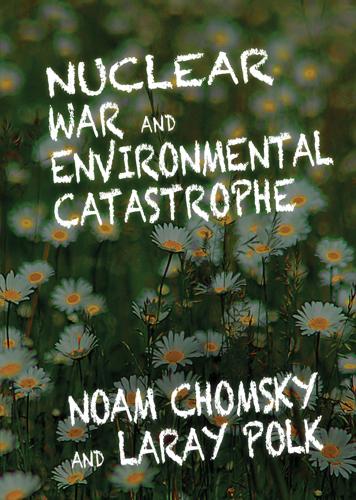
Nuclear War and Environmental Catastrophe
by
Noam Chomsky
and
Laray Polk
Published 29 Apr 2013
“Military Funding of University Research,” Annals of the American Academy of Political and Social Science 502 (March 1989): 153, doi:10.1177/0002716289502001011. 3. Toxicity of War Laray Polk: We’ve spoken previously about Reagan’s “Star Wars” program as something that developed as a palatable alternative to nuclear stockpiling. Isn’t there also something to be said about the location of the Ronald Reagan Ballistic Missile Defense Test Site on Kwajalein Atoll, a heavily contaminated area as a result of US atomic testing?31 Noam Chomsky: I suppose it reflects the prevailing conception that the “unpeople” of the world—to borrow the phrase of British diplomatic historian Mark Curtis—are dispensable.32 The level of contamination left from US atomic testing in the Marshall Islands is immensely troubling, but so too is what might be transpiring in Iraq and other areas of the Middle East due to the use of depleted uranium.
…
Noam Sheizaf, “Clear and Present Danger,” Ha’aretz, October 29, 2010. 54 Louis Charbonneau, “U.S. and Other Big Powers Back Mideast Nuclear Arms Ban,” Reuters, May 5, 2010. 55 Diego Garcia is home to one of five monitoring stations used to operate NAVSTAR GPS. Other terrestrial locations in the network include Hawaii, Colorado, Ascension Island, and Kwajalein Atoll. Implemented by the Department of Defense in 1973, NAVSTAR GPS is a radio-navigation system that utilizes satellite to ground triangulation to provide precise geospatial coordinates for both military and civilian use (i.e., vehicle and cellular map locator). The system is usually referred to in its shortened form, GPS.
…
Recent news of the UK government’s plan to create a marine protection area has further inflamed the issue; a leaked diplomatic cable confirmed suspicions it was a move to deny Chagossians the right of return: “BIOT’s former inhabitants would find it difficult, if not impossible, to pursue their claim for resettlement on the islands if the entire Chagos Archipelago were a marine reserve.” WikiLeaks, s.v. “Cable 09LONDON1156, HMG Floats Proposal for Marine Reserve Covering,” May 2009. On GPS and Kwajalein Atoll, see Vltchek, note 1, chap. 3. 56 In 2009 the Pentagon sent an “urgent operational need” funding request to Congress to fast-track the development and testing of the Massive Ordnance Penetrator (MOP), a thirty-thousand-pound bunker-busting bomb designed to hit underground targets.

Reentry: SpaceX, Elon Musk, and the Reusable Rockets That Launched a Second Space Age
by
Eric Berger
Published 23 Sep 2024
At times, it seemed like this was going to be insurmountable.” They started with one engine on the tripod in Texas. By early 2008, they had installed two, then three, then five, until finally there were nine engines on the stand. That summer, as the Falcon 1 engineers scrambled to save SpaceX with their fourth attempt to reach orbit from Kwajalein Atoll in the Pacific Ocean, the McGregor engineers were making progress on the much larger rocket. The team confronted a seemingly unending sequence of challenges. An engineer’s life consists of staring down one technical problem after another, fixing this or modifying that, in an interminable quest to make something work.
…
But there is a lot of complexity involved in making sure this particular light bulb does turn on. This unenviable task eventually fell into the lap of Hans Koenigsmann, the fourth employee at SpaceX. Originally, the German engineer had managed avionics for the Falcon 1 rocket, but over time his role evolved to focusing on flight safety. Launching from Omelek Island on Kwajalein Atoll in the Pacific posed fewer risks. The tiny island launch site was surrounded by water, and there were no major population centers. As a result, no explosives were needed to end the flight of the Falcon 1. The engine’s thrust would simply be terminated. But in Florida valuable aerospace properties crowded the Falcon 9 launch site, and the cities of Cape Canaveral and Cocoa Beach were nearby.
…
So when push came to shove, it was SpaceX that got shoved. Air Force officials told Musk he would have to wait several months, if not longer, for the Titan IV to launch before he could attempt an experimental flight of the Falcon 1. Seething, Musk abandoned Vandenberg and threw SpaceX’s remaining resources into launching from the distant Kwajalein Atoll in the Central Pacific. It had been a desperate throw of the dice that almost killed SpaceX. Six years later the Titan IV was retired, and SpaceX had proven itself to be a responsible operator with the Falcon 9. The Air Force welcomed SpaceX back and agreed to lease the old Titan launch pad, Space Launch Complex 4 East, to the new guys.
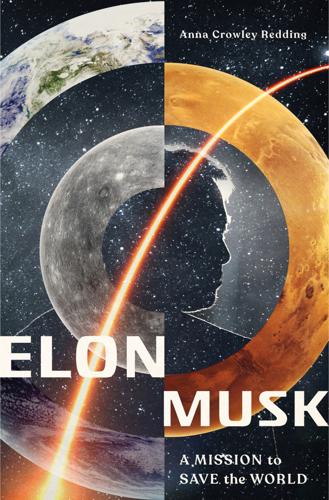
Elon Musk: A Mission to Save the World
by
Anna Crowley Redding
Published 1 Jul 2019
Now he had to launch it, preferably without blowing it up in the process. Want to reach orbit? You’ll have to travel at least 17,500 mph. The Apollo 10 mission flew at 24,989 mph to reach the moon! In 2005, in the middle of the Pacific Ocean, some two thousand miles from Hawaii, Elon and his team took over a tiny speck of the Marshall Islands, called the Kwajalein Atoll—home to their launch site. How do you get a rocket to a tiny strip of coral reef in the middle of the Pacific? SpaceX used two options: a barge and, alternatively, a C-17 military transport plane. At this point, Elon knew the rocket inside out—well enough, he said, to redraw the whole thing without the blueprints.
…
I love the whooshing sound they make as they go by,”97 Hitchhiker’s Guide author Douglas Adams once said. He was famous for not meeting them. And now Elon was too. Though to be fair, Elon set the impossible deadlines himself. This became known (mostly affectionately) as Elon time. Falcon 1 small launch vehicle at Kwajalein Atoll. (Photo by Defense Advanced Research Projects Agency [DARPA].) BACK IN THE SADDLE March 24, 2006—the sound of Elon’s flip-flops smacking the floor set the rhythm as he paced back and forth in the Kwajalein control room. Falcon 1 was fueled and ready for launch. Preflight checks began.
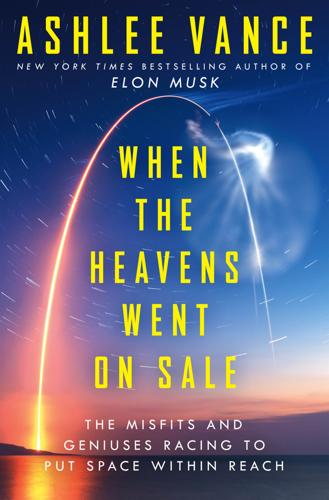
When the Heavens Went on Sale: The Misfits and Geniuses Racing to Put Space Within Reach
by
Ashlee Vance
Published 8 May 2023
Maybe Elon Musk, the SpaceX founder and CEO, had made a terrible, costly mistake by believing in them. Maybe they were minutes away from needing to look for new jobs. The conditions for this type of operation were comically less than ideal from the start. SpaceX had set up its rocket-launching facility on Kwajalein Atoll, a collection of a hundred islands hanging out together in the middle of the Pacific Ocean with Hawaii and Australia as their theoretical neighbors. The island specs barely edge out of the water, and they all come with the thick humidity, inescapable sunshine, and salty spray welcome during a tropical holiday but abhorred while doing manual labor and toiling with machinery.
…
The Pacific Spaceport Complex has not been an especially active launch site. Before Astra came to town, about twenty rockets had been flown from there in twenty years. Most of them had been military exercises in which a missile fired from Kodiak was sent out over the ocean to see if it could be intercepted by another missile launched thousands of miles away from Kwajalein Atoll. In 2014, the military tried to launch an experimental weapon, and something went wrong with the rocket, causing it to veer off course. A safety officer hit a button and blew the rocket up just four seconds into its flight, which resulted in a major explosion that destroyed much of the spaceport.
…
“I was about advanced technology, not some mundane thing where we’d already figured out all the problems,” he said. Still, a trip to the South Pacific seemed better than another trip to a crackpot’s lab in a strip mall. Markusic and Weeks flew from Alabama to Hawaii and then hopped aboard another plane and headed out to the middle of nowhere—to Kwajalein Atoll, part of the Marshall Islands. The main hotel on Kwajalein looks like an army barracks, and that was where Markusic set down his luggage and stacks of management books. The rest of the surroundings were anything but Huntsville. Ronald Reagan–era military complexes and top secret weapons systems.

Elon Musk
by
Walter Isaacson
Published 11 Sep 2023
When the light changed, Eberhard left him in the dust. The same thing happened at the next two lights. Finally the kid rolled down his window and asked Eberhard what he was driving. “It’s electric,” Eberhard said. “There’s no way you can beat it.” 22 Kwaj SpaceX, 2005–2006 Hans Koenigsmann and Omelek Island in the Kwajalein Atoll Catch-22 Musk had planned to launch SpaceX’s rockets from one of the most convenient possible locations: Vandenberg Air Force Base, a 100,000-acre facility on the California coast near Santa Barbara. Rockets and other equipment could easily be driven there from the SpaceX headquarters and factory in Los Angeles, about 160 miles to the south.
…
It was near the international date line, but nothing else. Once a U.S. territory that was used as an atomic weapon and missile test site, the Marshall Islands had become an independent republic but remained closely aligned with the U.S., which maintained military bases there. One of them was on a string of tiny coral-and-sand islets known as the Kwajalein Atoll. Kwajalein Island, known as Kwaj, is the largest speck in the atoll. It’s home to a U.S. Army base with fraying hotel facilities that resemble dormitories and a landing strip that tries to pass for an airport. Three days a week, there was a flight from Honolulu. Factoring in layovers, it took close to twenty hours to get from Los Angeles to Kwaj.
…
When the rocket cleared the tower, the cheering began, but Musk stared silently at the data streaming onto his computer and at the monitor on the wall showing video from the rocket’s cameras. After sixty seconds, the video showed the plume from the engine darkening. This was fine; it was because the rocket had reached more rarefied air with less oxygen. The islets of Kwajalein Atoll receded, looking like a strand of pearls in the turquoise sea. After two minutes, it was time for the stages to separate. The booster engine shut down, and this time there was a five-second delay before the second stage was unleashed, to prevent the bumping that had doomed the third launch. When the second stage slowly pulled away, Musk finally allowed himself to let out a whoop of joy.

Pinpoint: How GPS Is Changing Our World
by
Greg Milner
Published 4 May 2016
The crews here keep obsessive watch over a constellation of thirty-one GPS satellites, orbiting more than 20,000 kilometers above the planet. Every few minutes, someone at the Master Control Station announces a “pre-pass” and recites steps from a checklist, a prelude to the crew contacting one of the satellites to update its data and perform maintenance. Around the world, from Kwajalein Atoll in the Pacific to the south of England, sixteen far-flung monitoring stations collect data pertaining to each satellite’s signal as it comes over the horizon, noting its speed and trajectory. The crunched numbers, based on 1,200 different protocols, tell the crews at Schriever how the satellite is performing, and whether they need to upload new instructions.
…
United States, 178 Khomeini, Ayatollah, 84 Kind and Usual Punishment (Mitford), 177 Kitchin, Rob, 118 Kittredge Hall, 31 KLM Airlines, 229 Kon-Tiki, 12 Korean Air Lines Boeing 747, 81–82, 140 Korean War, 89 Korzybski, Alfred, 117–18 Kosovo, Serbian aggression in, 71 Kremlin, 75 Krull, Jay Dee, 126 Kuipers, Benjamin, 123–24 Kuwait, Iraqi invasion of, 62–63, 96 Kuwait City, 63 Kwajalein Atoll, xiv L1, 76, 91, 97–98 L2, 91, 92, 97–98 LaGuardia Airport, 170 Lake, Philip, 206 Lamarck, Chevalier de, 27 Lamarr, Hedy, 54 Landers, Calif., 215 land surveying, 245–51 modern history of, 248–51, 254–55 triangulation used in, 245–49, 251–54 Lang, John, 12 Laos, 51 Larson, Kristine, 217, 228–29 Last, David, 166–67 Las Vegas, Nev., 111, 135, 175 Laufenberg, 158 Leary, Timothy, 172–73, 174 Leclerc, George-Louis, 204 Levine, Judah, 154–55, 166 Lewis, David, 11–14, 18–22 Liang, Sam, 193–94, 200 Libya, 60–61 Lichten, Stephen, 261 Life, 210, 251 light, 156 speed of, xix, 40 Linz, 239–40 Livermore, Calif., 142–43 Locata company, 164, 165–66 London, xv, 25, 44, 55, 67 cab and bus drivers in, 133 Earl’s Court, 156 Hammersmith borough, 156 Long Island, N.Y., 243 LORAN (long-range radio navigation), 27, 37, 76, 81, 166 Loran-C, 76, 81, 85, 86, 157 Los Alamos National Laboratory, 146 Los Angeles, Calif., 141, 202, 203, 210 Northridge earthquake in, 215 Los Angeles Air Force Base, 53, 58 Louisiana, 69 Louisville, Ky., 143 Love, Jack, 194–95 Lowe, Fritz, 233 Machiavelli, Niccolò, 7 machine guns, 49 Macrometers, 213 Madrid, 192 Magellan, Ferdinand, 6, 7 Magellan GPS units, 111–12, 135, 136–37 Magellan Navigation, Inc., 89–90, 96, 98, 100, 126 Magnavox, 55–56, 58, 77, 78–79, 93 magnetic resonance imaging (MRI), 133 Maine, 249 Maloof, Matt, 42 Malys, Steve, 255–56 Mandalay, 251 Manpacks, 92–94, 95 maps, 127, 252–55 city, 130 cognitive, 115–20, 128, 130, 132, 133, 238 comprehensive, 116, 117–18, 128 computer, 241 digital, 122 downloading of, 126 hastily sketched, 124 moving, 122, 123 Pacific Ocean, 10, 13, 14, 263–64 reading and interpreting of, 126 reality, 117–18 strip, 116, 118, 128 territories vs., 117–18 see also Google Maps marine biology, 15 Marine Corps, U.S., 46 Mark, David, 124, 125 Marquesas, 4, 9, 265 Mars, 20 atmosphere on, 258, 262 exploration of, 258–62 Mars Climate orbiter, 259 Marseille, 263 Marshall Islands, 251, 265 Mars Odyssey mission, 259–60 Mars Polar Lander, 259 Mars rovers, 203, 258–59 Mars Science Laboratory, 258, 262 Marston, Glenn, 237 Martin Company, 34 Martinez, Bob, 196 Martínez de Zúñiga, Joaquín, 12 Martin-Mur, Tomas, 258 Maryland, 30, 44, 188 Maskelyne, Nigel, 26 Massachusetts, 184, 208 Massachusetts Institute of Technology (MIT), 48, 209–10, 212–14, 246 MIT Media Lab, 239 mathematics, 205, 246, 255 “Mau,” see Piailug, Pius McClure, Frank, 37–38, 39 McDonald, Larry, 82 McDonald’s, 123 McGranaghan, Matthew, 124, 125 McHugh, Tom, 142 McNamara, Timothy, 131–32 McNeff, Jules, 47, 97, 99 Meades Ranch, 249 Mediterranean Sea, 113–14 Melanesia, 11 Melville, Herman, ix memory, human, 125, 128–29, 130, 237, 238 memory, solid-state, 126 Memphis, Tenn., 143 Mercator, Gerardus, 240 meteorology, 15, 27–28, 204, 227–28 GPS-enabled, 228 methamphetamine, 179 Mexico, 31, 161, 249 microchips, 87 Micronesia, 265 microprocessors, 79, 84 microwaves, 36–37, 41, 78 Milky Way, 257 Minitrack, 30–32, 35, 39, 57 Minnesota, 155 missiles, 47, 209, 250 Atlas ballistic, 43 CALCM, 69 cruise, 62, 69 guided, 37, 62 Hellfire, 66 long-range, 69–70 nuclear, 62, 69 Russian, 81 Scud, 66 tracking of, 37 Missouri, 71, 89 Missouri, USS, 48 Mitchell, Donald, 88 Mitford, Jessica, 177 Mitre, 139 Moby-Dick (Melville), ix modems, 195 Mojave Desert, 215, 259 Molyneaux, Robert, 9 Monaco, 168 Mona Lisa (Leonardo), 99 moon, 24, 26, 252 craters on, 210 landing of Apollo 11 on, 208 landing of Apollo 15 on, 210 moon rover, 210 Moorman, Thomas, 68 Moscow, 251 Moser, Edvard, 129 Moser, May-Britt, 129 Mosul, 69 Mountain City, Nev., 112, 135, 136 MTSAT Satellite Augmentation System (MSAS), 142 Murray, Sara, 197–98 napalm, 51 National Academy of Science, 31, 256 National Aeronautics and Space Administration (NASA), 212, 257 Ames Research Center of, 96 Apollo missions of, 208, 210 Communications, Tracking, and Radar Division of, 261 Jet Propulsion Laboratory (JPL) of, 203, 210, 213, 214, 222, 231–32, 258, 261 Mars program of, 258–62 space shuttle program of, 61, 88 National Geospatial-Intelligence Agency (NGA), 255–56, 261 see also Defense Mapping Agency National Institute of Standards and Technology (NIST), 154–55, 166 National Oceanic and Atmospheric Administration, Earth System Research Laboratory of, 227 National Research Council, 99–100 National Space Policy, 101, 144 Naval Academy, 48 Naval Observatory, U.S., 44, 155 Master Clock at, xv, 154 Naverus, 139 navigation, 6–22, 48, 119–20 Carolinian, 18–21, 118 of carriages, 120 commercial shipping, 38 determining routes in, 17 Doppler-aided, 36–38, 40, 43, 44, 51, 259 estimating distance, speed and time in, 16–17, 19, 22–26, 31, 39, 40, 130 etak compared to, 18–19 experiments in, 127–29 home-centering vs. self-centering systems of, 17, 20, 21–22, 27 improving skills of, 133 inertial, 48, 82 local-reference system of, 17, 20, 21, 22 loss of environmental engagement in, 119, 129, 134 modern technologies of, 27 orientation in, 130–33 passive ranging in, 40–42, 44, 45, 53, 101–2 Polynesian, 6, 8–18 space, 30–45 by sun and stars, 4, 6, 7, 9, 13, 14, 15, 18, 19, 20, 86 tools of, 5, 6, 13, 25, 26–27, 38–39 see also GPS auto navigation units NAVSPASUR (Navy Space Surveillance System), 39–40 Navstar Global Positioning System, 54 Navy, U.S., 37, 40, 42, 46, 56, 251 Naval Research Laboratory (NRL) of, 29, 30, 31, 39, 42–43, 47, 57, 252 Ordnance Bureau of, 38 Navy Navigation Satellite System, 38 Navy Seals, 93 Nellis, Mike, 195, 197, 283 nervous system, 118 Netherlands, 166 neurological pathologies, 118 neutrinos, 155–56 Nevada, 111 Newark Liberty International Airport, 170, 171–72, 181–82 GPS jamming incident at, 200–201, 283–84 Newell, Homer, 29, 35 New England Datum, 249 New Guinea, 4, 86 New Haven, Conn., 184 New Jersey, 170–72, 249 New Jersey Turnpike, 170–71, 172, 181–82, 200, 281 New Mexico, 44, 146, 151 New Mexico penitentiary, 195 New Orleans, La., 192, 249 Newton, Isaac, 246 New York, N.Y., xv, 81, 164, 239–40, 245, 251 Coney Island, 249 distinguishing uptown from downtown in, 17 Greenwich Village, 17 Kips Bay, 236 Manhattan, 236 Queens, 243 Staten Island, 220 Times Square, 167 traffic patterns in, 192 transportation in, 17, 145, 192 World Trade Center in, 17, 170 New York City Marathon, 220–21 New York Herald Tribune, 34 New York Stock Exchange (NYSE), 34 New York Times, 173 New York Times Magazine, 86 New York World-Telegram and Sun, 35 New Zealand, 4, 12 NextGen, 142 NextNav company, 192 Nighthawk stealth aircraft, 66 NIMCOS company, 195 Nimer, Richard, 195 Nixon, Richard M., 51 North America, 25, 142, 215, 230, 242, 250, 254 electrical grid of, 158, 160 North American Aerospace Defense Command (NORAD), xiii North American Datum of 1927 (NAD27), 249–51 North Atlantic Treaty Organization (NATO), 71 North Korea, 166 North Stradbroke Island, Australia, 113 North Vietnam, bombing of, 51, 70 Norway, 251 NTS-2 satellite, 58–59 nuclear waste, 146 Oakland, Calif., 203 Obama, Barack, 255 oceanography, 15, 38 oceans: positional awareness on, 24–27 shipwrecks on, 26 see also specific oceans Odishaw, Hugh, 29 odometers, 120, 121, 243 Oetting, Valerie, 90 O’Hare Airport, 141 Ohio, 158, 164 Ohio State University, Mapping and Charting Research Laboratory of, 250–51 O’Keefe, John, 129, 252 Omega, 27 Omnitracs system, 182 Operation Allied Force, 71 Operation Desert Storm, see Gulf War Operation Eagle Claw, 77 Operation El Dorado Canyon, 61–62 Oregon, 111, 112, 202, 225 Origin of Continents and Oceans, The (Wegener), 205, 206 O-rings, 92–93 ornithology, 15 Oro worship, 7–8 Ortelius, Abraham, 204 Orwell, George, 177 oscillators, 41, 43, 77 oscilloscopes, 59, 79 Owens Valley, 214 Pace, Scott, 46, 68, 97–98 Pacific Ocean, xiv, 18–20, 26, 106–8, 122, 183, 218, 221–22, 229, 249 canoe travel on, 5, 9, 11, 14–15, 18–19, 264, 268 currents and winds of, 13, 14–15 exploration of, 4–10, 26, 27, 106–7 first detailed map of, 7 islands of, 4–13, 22, 27, 106–8, 251 maps of, 10, 13, 14, 263–64 ring of fire in, 221, 229 seismic disturbances in, 202 shipping charts of, 27 swell patterns of, 13, 14 Pacific Plate, 208 Pacific Rim, 4, 12 Palatucci, Joe, 242–43 Palo Alto, Calif., 77 Pangea, 3–4, 205 Pangea Ultima, 3 Papeete, 265 Paris, xv, 24, 154, 155, 167, 246 Eiffel Tower in, 167 Park Avenue Audio, 236–38 Parkinson, Brad, 45, 48, 50, 52–54, 56–58, 60–61, 65, 70, 81, 100, 140, 153, 165–66, 185, 230, 250, 272 particle accelerators, xix Pasadena, Calif., 203, 226 passive positioning systems, satellite-based, 40 passive ranging, 40–42, 44, 45, 53, 101–2 Pattabiraman, Ganesh, 192–93 Pave Low III helicopters, 65–66 PCM signals, 156 Pearl Harbor, bombing of, 34 Penn Station (New York City), 237 Penticton, 111 peregrine falcons, 237 Permanent GPS Geodetic Array, 214, 215 Permilab particle physics facility, 155 Persian Gulf, 63, 96 Peru, 12 Peterson Air Force Base, xiii Phasor measurement units (PMU), 159–61 Philippines, 12 photogrammetry, 251 photography, 235–39, 243 physics, 15, 28, 155, 204 Piailug, Pius “Mau,” 265–66 Picard, Jean, 245–46 pigeons, 174 PlaceMe, 193 planets, 24–27, 259 Plate Boundary Observatory, 215, 218 plates, tectonic, 215, 253, 258 continental, 207–8 movement of, 3–4, 202–8, 209, 214, 216, 232, 255 North American, 208, 221, 222 oceanic, 207, 208 Okhotsk, 221n Pacific, 208, 215, 221 Philippine Sea, 221 Point Arena, Calif., 249 Poland, 244 Polaris nuclear submarines, 37 police, 178–79, 181–82 British, 187–88, 197–98 German, 185–87 Irish, 187–88 Polynesia, 18, 21, 106, 264 Polynesians, 4–18 migration of, 11, 12–13, 21, 106, 264, 268 navigation of, 6, 8–18 origins of, 12 Polynesian Triangle, 264 Pong (video game), 121 Port Elizabeth, N.J., 170 Portis, Charles, 3 Precision Market Insights, 192 prime meridian, 25 prisons, 195, 197 privacy, xx, 177, 186–87, 190–91, 192–94, 200 Probation (magazine), 177 Project Moonbeam, 31 Project Moonwatch, 31 Project Vanguard, 29–35, 252 Pro Tech company, 196 proximity beacons, 121 psilocybin, 173 psychology, 116–18, 119, 131–32, 172–77 experiments in, 125, 127–29, 173–77, 277 psychotherapy, 173 Puea, 8 Pueblo, Colo., 75 Pullen, Sam, 181 Pyrenees Mountains, 246 Qihoo 360, 153 quadrants, 13 Qualcomm, 182 quasars, 209, 257, 261 radar, 27, 51, 66–67, 122, 142, 168, 229 GPS-assisted, 67 radiation, 43, 214, 258 radioactive materials, 146, 207 radio signals, xviii, 27, 30–31, 39, 54, 71, 91, 138, 171, 195 of celestial objects, 209 ham, 31 software vs. hardware components of, 149 transmission of, 210 Ra’iatea, 7, 9, 106 range measuring, 40 Rapa Nui, 4 rat experiments, 115–17, 118–19, 129, 133 Rea, Don, 90 Reagan, Ronald, 82, 140 Receiver Autonomous Integrity Monitoring (RAIM), 139–40 Red Army, 250 Red Army Faction, 185 Redoubt, Mount, 229–30 Regensburg, 49 Rehnquist, William, 180 relativity, xix, 267 Remote Oceania, 4 Resolution, HMS, 106–7 Rhodes, 168 Richmond Times, 34 Ring of Fire, 4 Rio Grande Valley, 40 Riyadh, 63–64 rockets, 28–29, 32–35 failure of, 33–35 Rockwell Collins, 58–60, 72, 78–79, 92, 93, 97 Rocky Mountains, 73 Rome, 55, 158–59, 164 Rosen, Milt, 252 Rotuma, 10 route discs, 120 Royal Institute of Navigation, 166 Royal Observatory, 25, 44 Royal Society, 7 Russia, xvii, 144, 166 Russian space agency, 88 Rutan 76 Voyager aircraft, 126 Saarbrücken, 127 Sahul, 4 Saigon, 64 St.
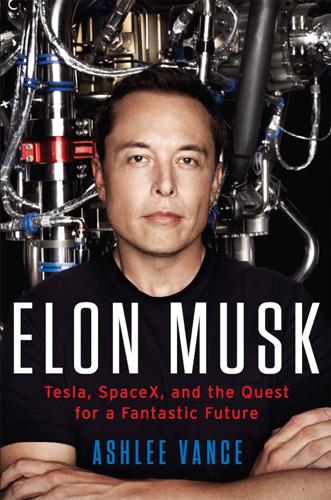
Elon Musk: Tesla, SpaceX, and the Quest for a Fantastic Future
by
Ashlee Vance
Published 18 May 2015
Shotwell looked up the name of a colonel at the test site and sent him an e-mail, and three weeks later got a call back with the army saying they would love to have SpaceX fly from the islands. In June 2005, SpaceX’s engineers began to fill containers with their equipment to ship them to Kwaj. About one hundred islands make up the Kwajalein Atoll. Many of them stretch for just a few hundred yards and are much longer than they are wide. “From the air, the place looks like these beautiful beads on a string,” said Pete Worden, who visited the site in his capacity as a Defense Department consultant. Most of the people in the area live on an island called Ebeye, while the U.S. military has taken over Kwajalein, the southernmost island, and turned it into part tropical paradise and part Dr.
…
Photograph courtesy of Tesla Motors SpaceX built its rocket factory from the ground up in a Los Angeles warehouse to give birth to the Falcon 1 rocket. Photograph courtesy of SpaceX Tom Mueller (far right, gray shirt) led the design, testing, and construction of SpaceX’s engines. Photograph courtesy of SpaceX SpaceX had to conduct its first flights from Kwajalein Atoll (or Kwaj) in the Marshall Islands. The island experience was a difficult but ultimately fruitful adventure for the engineers. Photograph courtesy of SpaceX SpaceX built a mobile mission-control trailer, and Musk and Mueller used it to monitor the later launches from Kwaj. Photograph courtesy of SpaceX Musk hired Franz von Holzhausen in 2008 to design the Tesla Model S.

Lonely Planet's 2016 Best in Travel
by
Lonely Planet
Published 30 Sep 2015
Well, close to its shores to be precise; the islands are only open to visitors on liveaboard dive safaris, visiting some of the most untouched reefs in the Pacific and the wrecks of the fleet of empty warships blown up in the Bikini tests. Dive trips to Bikini Atoll run from April to November, departing from tiny Kwajalein Atoll in the western chain of the Marshall Islands. 4 Yali & Korowai Country, West Papua, Indonesia In the impenetrable rainforests of West Papua, formerly Irian Jaya, there are said to be people who have never encountered anyone from the outside world. Boats and planes will ferry you as far as the coast of this jungle wilderness, but with the almost total absence of roads, from there on you are on your own.
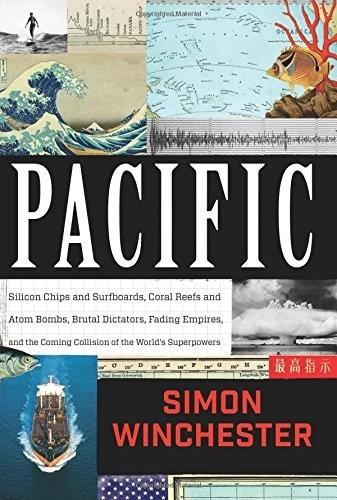
Pacific: Silicon Chips and Surfboards, Coral Reefs and Atom Bombs, Brutal Dictators, Fading Empires, and the Coming Collision of the World's Superpowers
by
Simon Winchester
Published 27 Oct 2015
Kerry Emanuel’s large-format book Divine Wind, an analysis of the atmosphere’s endless capacity for high-velocity ferocity, proved invaluable for my writing of this rather complicated chapter. Kevin Hamilton, director of the International Pacific Research Center at the University of Hawaii, has written numerous technical papers on the El Niño Southern Oscillation (ENSO); and Mark Bradford, chief meteorologist on Kwajalein Atoll, is similarly to be regarded as a voice of authority on El Niño and its related complexities. JAMSTEC, the Japan Agency for Marine-Earth Science and Technology in the Tokyo Bay port city of Yokosuka, also issues streams of data on its El Niño researches. Much science is being performed throughout the Pacific on this ever more crucial topic.
…
One of his senior advisers, Commander Jon Duffy, now at the White House, was helpful both at the time in Hawaii and subsequently when posted to Washington; he took time to read the passages concerning the rise of modern China, and made many useful and constructive comments. Naturally any errors of fact or interpretation are mine alone, and neither his words of advice, nor those of any others mentioned here, should be thought of as suggesting an official endorsement. My visit to Kwajalein Atoll and to the U.S. Army’s missile range operations there was arranged by Michael Sakaio and Shannon Paulsen, both of whom were hospitable to a fault during my stay with them. If I write critically of the local treatment of the Marshall Islanders, Mr. Sakaio and Ms. Paulsen will both appreciate, I am sure, that it is the policies that I fault, and not the personnel, who in their cases were kindness personified.

The Last Stargazers: The Enduring Story of Astronomy's Vanishing Explorers
by
Emily Levesque
Published 3 Aug 2020
Faced with minimal daylight and hostile terrain, the team wound up putting a financial bounty on the payload, awarded to whoever could track it down in the Alaskan wilderness. It worked: two summers later, someone found the moss-covered payload embedded in the ground (and claimed the reward). Another launch site commonly used for rocket astronomy is the tiny island of Roi-Namur in the Kwajalein Atoll of the Marshall Islands, a remote cluster of Pacific islands near the equator with a military launch site that NASA can rent for scientific research launches. A challenge on Roi-Namur is ditching the rocket and landing the payload properly; with the island surrounded on all sides by environmentally delicate coral reefs, dropping anything from the launches into the nearby ocean is strictly prohibited.

Realizing Tomorrow: The Path to Private Spaceflight
by
Chris Dubbs
,
Emeline Paat-dahlstrom
and
Charles D. Walker
Published 1 Jun 2011
Along with the idiocy came the challenges. For instance, in order to significantly reduce the cost of his launch vehicle, Musk had to build 8o percent of his rocket from scratch- "soup to nuts," as he puts it. Red tape for obtaining a launch license forced him to relocate his launch operations to the Kwajalein Atoll in the Pacific. His first three unsuccessful launch attempts were beset with technical problems that prevented the rocket from achieving Earth orbit. Finally, on z8 September 2008, SpaceX's Falcon i successfully launched to low Earth orbit on its fourth attempt. The launch vehicle is capable of lifting 926 pounds of payload to orbit and is partially reusable.

The Space Barons: Elon Musk, Jeff Bezos, and the Quest to Colonize the Cosmos
by
Christian Davenport
Published 20 Mar 2018
“It’s the perfect environment of right temperature, humidity, and salt spray.” There were, however, some upsides. While the range, known as the Ronald Reagan Ballistic Missile Test Site, was a government facility, SpaceX and DARPA had almost free rein with limited interference. Surrounded by turquoise water, sandy beaches, and palm trees on an island known as Kwajalein Atoll, or Kwaj, the setting felt like an island vacation spot. “It was fun; we had the run of the place,” Walker said. It was a location where the young company “could learn and practice” the precise art of the launch. The teams slept in army-style barracks, often two to a room. There was outstanding snorkeling.

Debt of Honor
by
Tom Clancy
Published 2 Jan 1994
He didn't think so, but just to make sure, NASA had an observation camera watching the H-11. The Japanese didn't know that, of course. NASA had tracking facilities all over the world to monitor U.S. space activity, and since they often had nothing to do, they kept track of all manner of things. The ones on Johnston Island and Kwajalein Atoll had originally been set up for SDI testing, and the tracking of Soviet missile launches. The tracking camera on Johnston Island was called Amber Ball, and its crew of six picked up the H-11, having been cued on the launch by a Defense Support Program satellite, which had also been designed and orbited to give notice of Soviet launches.
…
We were asked to cooperate with government deception operations, and after careful consideration, it was decided that CNN is, after all, an American news service…" "Bastards!" General Arima breathed, looking at the empty concrete structure, occupied only by puddles and wooden blocks now. Then his phone rang. When it was certain that the Japanese E-2Cs had them, two Air Force AWACS aircraft flipped their radars on, having staged in from Hawaii, via Dyess on Kwajalein Atoll. In electronic terms it would be an even fight, but the Americans had more aircraft up to make sure it was fair in no other way. Four Japanese Eagles were aloft, and their first instinctive action was to turn northeast toward the intruders, the better to give their comrades standing ground alert time to get aloft and join the air battle before the incoming attack got close enough to catch their comrades on the ground.
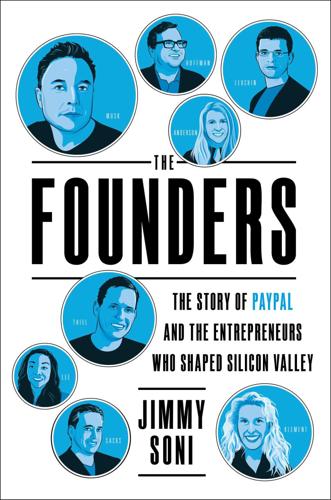
The Founders: The Story of Paypal and the Entrepreneurs Who Shaped Silicon Valley
by
Jimmy Soni
Published 22 Feb 2022
On August 4, 2008, SpaceX announced that it had received $20 million in equity investment from Peter Thiel’s Founders Fund, with the fund’s managing partner, Luke Nosek, joining SpaceX’s board. On September 28, 2008—almost eight years to the day he was deposed as X.com’s CEO—Elon Musk stood and watched SpaceX’s Falcon 1 rocket rise to the skies above Omelek Island in the Kwajalein Atoll, southwest of Hawaii. Nine minutes and thirty-one seconds into launch, the Falcon 1 became “the first privately developed, liquid fuel rocket to orbit the Earth.” PART 3 DOUBLED ROOKS 15 IGOR When the board pushed Musk out, Mike Moritz had insisted on a stipulation. Thiel could be interim CEO, but PayPal would have to run a proper CEO search.
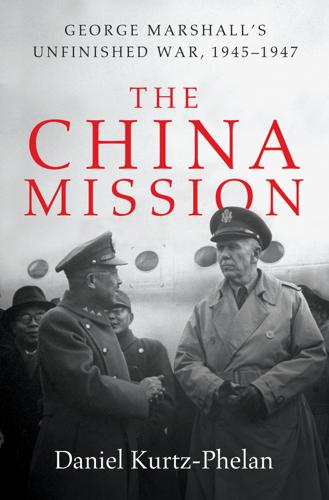
The China Mission: George Marshall's Unfinished War, 1945-1947
by
Daniel Kurtz-Phelan
Published 9 Apr 2018
“Everybody scurrying around doing not much of anything, but under the impression of great accomplishment, and all scared to death over the impending arrival of the great man himself,” recorded a young diplomat named John Melby. “No one knows what he is going to do, what his instructions, or how long he will be here.” Marshall had left almost a week before on his island-hopping journey across the Pacific: Washington to San Francisco, San Francisco to Honolulu, Honolulu to Kwajalein atoll, Kwajalein to Guam, Guam to Manila, Manila to the Chinese coast. In the Philippines, he stopped to revisit the country where he had done his first tour more than forty years earlier. When the plane passed low over his old post, he thought back to that rugged and innocent time—an officer new to the army, an army new to the ways of global power and distant imperial occupation.

Hirohito and the Making of Modern Japan
by
Herbert P. Bix
Published 1 Jan 2000
The enemy would not think it worth paying the price to reestablish the status quo over such vast distances. J traveled first to Saipan in the Marianas Islands, then to Truk in the Carolines, and from there to Rabaul on New Britain Island in the Bismarck Archipelago, where the navy was establishing a major base that could be used to support advances further to the southwest. From there, he went to Kwajalein atoll in the Marshall Islands, then to Wake, Guam, Palau (now Belau), Peleliu, and the new Japanese seaplane base at Davao, on Mindanao in the southern part of the Philippine Archipelago. He continued his tour by visiting the Dutch East Indies. His return trip took him to Subic Bay and Manila in the Philippines, and finally home by plane to Yokohama (stopping en route at Saipan) on April 23.

The Second World Wars: How the First Global Conflict Was Fought and Won
by
Victor Davis Hanson
Published 16 Oct 2017
If simply killing Americans had been the proper barometer of the Pacific war, then the Japanese seemed to have been improving faster than the Americans could defend themselves. After leaving Guadalcanal and the Solomon Islands, Admiral Nimitz’s leapfrogging began from Tarawa, Makin, and Apamama in the Gilbert Islands (in November 1943). Then the fleet and Marines and Army units headed northward to Kwajalein Atoll, Majuro, and Enewetak of the Marshall Islands (January–February 1944). The key Marianas taken in June–August 1944 were perhaps the most important of all the island acquisitions for future American air strikes against the Japanese mainland, given their suitability as long-range B-29 bomber bases.